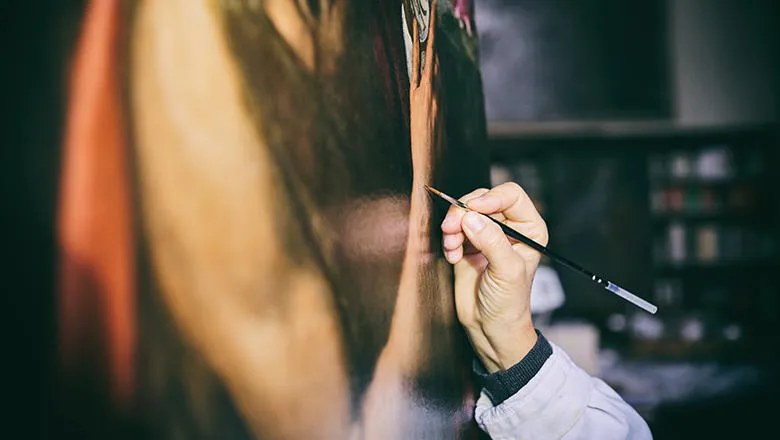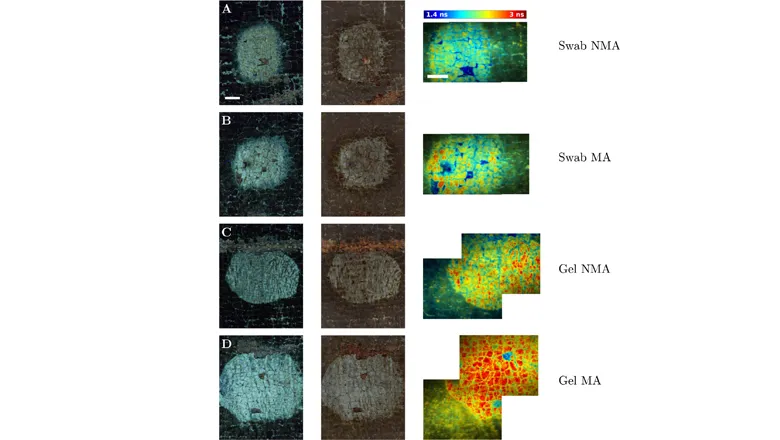By comparing the fluorescence of the varnish to these other components, we can chart where varnish sits with a level of accuracy never previously achieved.”
Professor Klaus Suhling, Department of Physics
26 June 2023
Physicists paint a bright future for art conservation with revolutionary new camera
Researchers from King’s harness the power of fluorescence to remove the guesswork from painting conservation

A new technology that could revolutionise the process of restoring historic paintings has been developed King’s scientists and the University of Edinburgh.
First publishing their findings in Heritage Science, a team led by Professor Klaus Suhling and Dr Jakub Nedbal from the Department of Physics have developed a highly sensitive camera and imaging software that reveals remnants of old varnish on a painting. This technique allows the residue to be removed with greater levels of accuracy than ever before, paving the way for a more precise approach to conservation.
Working with The Courtauld and the University of Edinburgh, the researchers created a photon sensitive camera with a novel imaging technology. Using a technique called macroscopic fluorescence lifetime imaging (FLIM) in a first of its kind for art conservation, the 25,000-pixel camera harnesses the natural fluorescence of centuries-old varnish to map it against other painting components like paint, binders and canvas, enabling conservators to remove it with greater precision.

Professor Suhling explains, “The conservation of paintings is vital to protect our cultural heritage for generations to come. Most paintings created before the late 19th Century have been varnished many times, making them appear dull or yellowed as the varnish degrades. To make the image visible again, it may be necessary to remove that varnish – but it can be a big challenge to differentiate this from the underlying paint and other components within the painting.
“Our method is an entirely new approach. The camera has a stopwatch in every pixel that tells you when the light from a surface enters it. We can shine a blue light against a painting, and then use the camera to time how long it takes the act of varnish fluorescing to enter these light-sensitive pixels against other components in the painting. By comparing the fluorescence of the varnish to these other components, we can chart where varnish sits with a level of accuracy never previously achieved.”
Historically, the process of varnish removal has involved conservators shining UV lamps on the surface of artworks to ascertain residue by eye. However, this method is highly reliant on the individual conservator and can be prone to inaccuracy. By removing the need for guesswork through detailed imaging, conservation can be undertaken with a new level of confidence and accuracy.
This technique has provided more detailed information about the paint and varnish during removal tests than any other previous method"
Professor Aviva Burnstock, The Courtauld
Fluorescence is typically used in the medical field and allows healthcare professionals to study, track and identify cancerous cells, but the study is often at the cross-section of other scientific disciplines. By incorporating light sensitive technology pioneered in astronomy, the recently developed camera can provide a clearer contrast of varnish imaging than that afforded by handheld UV lamps.
The Courtauld’s Professor Aviva Burnstock explains, “This technique has provided more detailed information about the paint and varnish during removal tests than any other previous method, paving the way for whole painting imaging during varnish removal. If achieved, that would be a great advance for painting conservators”.


